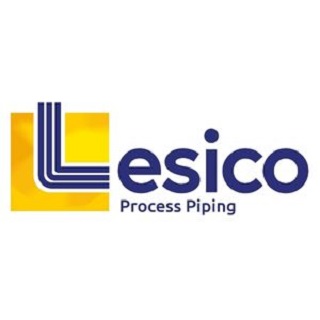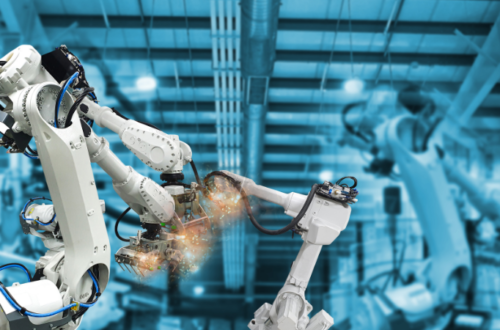In today’s fast-paced industrial environment, businesses are continuously seeking ways to improve efficiency, reduce costs, and enhance project quality. Mechanical prefabrication has emerged as a pivotal solution for large-scale projects, especially those involving process piping. Whether the project is taking place on-site or off-site, mechanical prefabrication has the potential to transform construction processes by streamlining work, minimizing errors, and improving safety outcomes. This blog explores the role of mechanical prefabrication in process piping projects and on-site installations, highlighting its benefits, applications, and potential for the future.
Understanding Mechanical Prefabrication in Process Piping Projects
Mechanical prefabrication involves the manufacturing and assembly of components, piping systems, and other mechanical equipment in a controlled, off-site environment. These components are then transported to the project site, where they are installed and integrated into the larger system. Prefabrication allows construction teams to work in a controlled setting with greater accuracy, reducing the margin for errors that can occur in complex, large-scale projects.
In process piping projects, where precision and reliability are paramount, mechanical prefabrication is particularly valuable. Process piping involves the transportation of fluids, gases, and chemicals through a network of pipes, valves, and fittings, often in industrial environments such as chemical plants, refineries, and manufacturing facilities. The complexity and precision required for these projects make mechanical prefabrication a natural fit.
Advantages of Mechanical Prefabrication in Process Piping
- Increased Efficiency and Speed Mechanical prefabrication allows for simultaneous work streams—while parts are being prefabricated off-site, on-site preparation can continue without interruption. This reduces overall project timelines. Since most of the assembly occurs in a factory setting, weather conditions, labor shortages, or site logistics do not slow down production. This parallel approach can reduce the total project schedule by 20% to 30%.
- Enhanced Quality Control In a factory-controlled environment, the conditions for mechanical prefabrication are optimal for ensuring precision. The ability to closely monitor production means that there is a higher level of quality control for components. Prefabricated process piping systems undergo stringent testing before they even reach the project site, ensuring that everything is manufactured to exact specifications. This results in fewer errors and defects during the installation phase.
- Cost Savings By prefabricating mechanical components off-site, companies can achieve significant cost savings. The controlled environment minimizes the risks associated with rework or project delays, thus reducing labor and material costs. Additionally, prefabrication reduces on-site labor costs since fewer workers are needed for final assembly.
- Improved Safety Safety is a major concern on any construction site, especially in process piping projects where hazardous materials may be involved. Off-site prefabrication reduces the amount of on-site work, leading to fewer opportunities for accidents or injuries. Workers in prefabrication facilities are also less exposed to the hazardous conditions often found in construction zones, such as working at heights, confined spaces, or exposure to toxic materials.
- Reduced Environmental Impact Prefabrication typically produces less waste than traditional construction methods. Because components are manufactured with precision in a controlled environment, there is less material wastage. This also contributes to a reduction in transportation emissions, as fewer materials need to be delivered to the project site over time.
On-Site Process Piping Projects: The Role of Mechanical Prefabrication
For on-site process piping projects, mechanical prefabrication brings numerous advantages by simplifying and accelerating the installation phase. These projects typically involve extensive coordination among multiple trades, such as piping, electrical, and HVAC. Prefabrication allows these trades to work more efficiently, as much of the mechanical work can be preassembled and shipped to the site for quick installation.
One key aspect of on-site process piping is ensuring that the prefabricated sections of piping seamlessly fit into the larger system. Advanced software and 3D modeling technologies have revolutionized this process, enabling companies to design piping systems with millimeter precision. As a result, prefabricated components can be delivered to the site with confidence that they will integrate without issues.
Moreover, on-site process piping projects often occur in operational facilities, where downtime can result in significant financial losses. Prefabrication minimizes the amount of time that workers need to spend on-site, reducing disruption to ongoing operations. By preparing large sections of piping in advance, the installation process becomes more efficient, allowing facilities to maintain uptime and productivity.
Applications of Mechanical Prefabrication in Process Piping Projects
Mechanical prefabrication has a wide range of applications across various industries. Some of the most common sectors where it is employed include:
- Chemical and Petrochemical Plants These facilities rely heavily on process piping to transport various chemicals, oils, and gases. Prefabricated piping systems help ensure that these projects are completed to the highest safety and quality standards while minimizing operational disruptions.
- Food and Beverage Industry In this sector, cleanliness and hygiene are critical. Prefabrication allows for the creation of sanitary piping systems that are built to precise specifications, ensuring compliance with regulatory standards.
- Pharmaceuticals The pharmaceutical industry requires high-purity piping systems for the manufacturing of drugs and other products. Prefabrication helps ensure that piping systems are built to meet strict cleanliness and quality standards while reducing project timelines.
- Power Generation Power plants often have complex piping systems for transporting water, steam, and other fluids. Prefabrication ensures that these piping systems are installed quickly and with minimal risk of error, reducing the risk of downtime in energy production.
- Water Treatment Facilities Water treatment plants also benefit from prefabricated process piping, which helps ensure the safe and efficient transport of water and chemicals used in the treatment process.
Challenges and Solutions in Mechanical Prefabrication
While mechanical prefabrication offers many benefits, it is not without its challenges. Some of the key obstacles that project managers may face include:
- Logistics and Transportation Large prefabricated sections of piping can be difficult to transport, especially for remote or confined project sites. However, careful planning and coordination with logistics teams can help overcome these challenges. Breakable modules can be designed for easy assembly once they reach the site, reducing the complexity of transportation.
- Design Adjustments On some occasions, on-site conditions may necessitate design adjustments that were not anticipated during the prefabrication phase. Utilizing advanced 3D modeling tools and close collaboration between on-site teams and off-site fabrication teams can mitigate these risks. Virtual simulations help predict any potential issues that may arise.
- Coordination Among Trades Effective communication and collaboration among different trades are critical to ensuring that prefabricated components fit seamlessly into the overall project. Scheduling and close coordination between prefabrication and on-site teams are essential for success.
The Future of Mechanical Prefabrication in Process Piping
The construction industry is increasingly adopting innovative technologies that complement mechanical prefabrication. Building Information Modeling (BIM), for example, allows teams to create digital representations of process piping systems, improving coordination and reducing errors. Robotics and automation are also making their way into prefabrication facilities, further enhancing accuracy and reducing production times.
As industries continue to emphasize sustainability, mechanical prefabrication will likely play a larger role in helping companies meet environmental goals. By reducing waste, improving efficiency, and enhancing safety, prefabrication aligns with the growing trend toward sustainable construction practices.
Conclusion
Mechanical prefabrication is revolutionizing process piping projects by improving efficiency, reducing costs, and enhancing overall project quality. For on-site process piping installations, prefabrication provides a streamlined approach that minimizes disruption and maximizes uptime. As industries continue to seek out innovative solutions for complex construction projects, the role of mechanical prefabrication is set to grow, driving improvements in both operational outcomes and environmental sustainability.
Whether your business operates in pharmaceuticals, power generation, or petrochemicals, mechanical prefabrication in process piping offers a clear path to more successful projects—on-time, within budget, and built to the highest standards.





